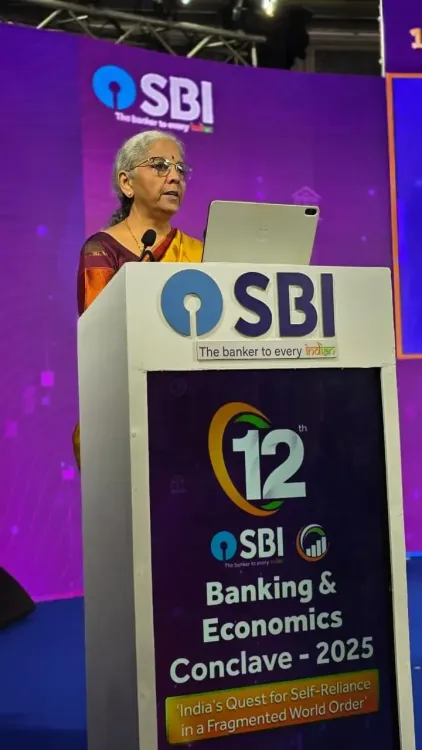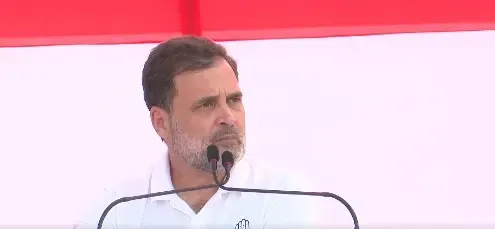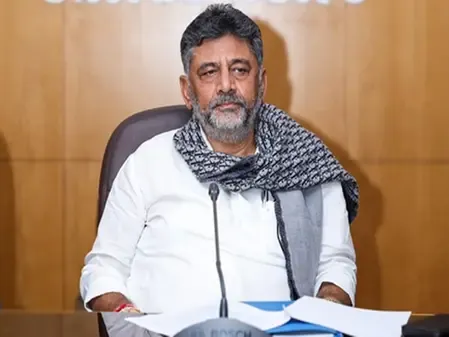How is 'Atmanirbharta' Bridging Domestic Needs with Global Value Chains?

Synopsis
Key Takeaways
- 'Atmanirbharta' signifies a commitment to self-reliance while engaging with global markets.
- Five key pillars form the foundation of Atmanirbhar Bharat.
- The journey towards Viksit Bharat began in 2014.
- Human resource policies in banks should focus on local communication.
- Investors must understand the risks associated with trading.
Mumbai, Nov 6 (NationPress) 'Atmanirbharta' signifies not isolation but a robust interdependence, which enables the fulfillment of domestic requirements while seamlessly integrating into global value chains, declared Finance Minister Nirmala Sitharaman on Thursday.
While speaking at the ‘SBI Conclave 2025’ in Mumbai, she highlighted that 'Atmanirbhar Bharat' aims for an India that not only designs, produces, and innovates for itself but also for the global market—creating an economy based on self-assurance, driven by entrepreneurship, and rooted in compassion.
“It represents a fusion of economic resilience, technological prowess, societal empowerment, and environmental stewardship—all synchronized with the overarching vision of Viksit Bharat by 2047,” emphasized the finance minister.
She outlined five key pillars of an 'Atmanirbhar Bharat': Economic self-reliance; Social self-reliance; Technological self-reliance; Strategic self-reliance; and Energy self-reliance.
“The journey towards achieving Viksit Bharat by 2047 through the atmanirbhar pathway began in 2014,” she remarked.
FM Sitharaman also urged all banks to adopt human resource policies that prioritize understanding customer needs and encourage staff to communicate in the local language.
“I advocate for performance evaluations that reflect proficiency in communicating locally,” she asserted.
During the inaugural address at the 12th SBI Banking and Economics Conclave 2025, themed ‘Realising the vision of Atmanirbhar Bharat’, she stated that the government is committed to facilitating futures and options trading while addressing existing barriers.
“It is up to investors to be aware of the risks involved,” she pointed out.
Recently, SEBI chief Tuhin Kanta Pandey mentioned that “we cannot simply halt weekly F&O expiries, as many market participants rely on them.” To assess the broader market implications of F&O trading trends, SEBI is currently compiling and analyzing extensive data on these patterns, which will be released for consultation before proceeding further.









